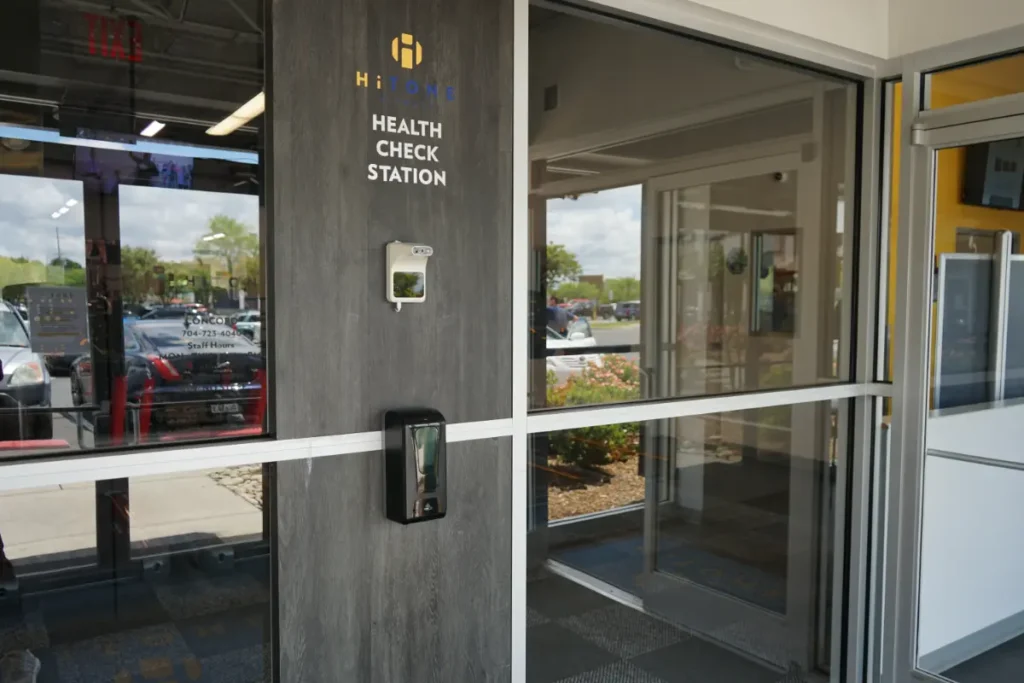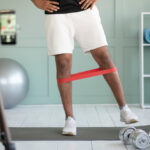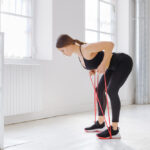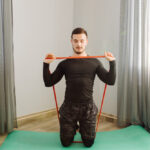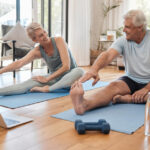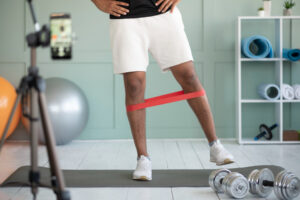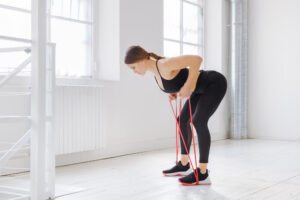Let’s talk about something that often gets overshadowed by workouts such as strength training and cardio: flexibility. It is often overlooked even if it can be incredibly beneficial for people of all ages. Whether you’re a gym newbie, senior, or office worker, incorporating flexibility exercises into your daily routine can work wonders.
Flexibility isn’t just about being able to do the splits or touch your toes. It’s about enhancing your overall movement, reducing the risk of injuries, and improving your posture. Imagine going through your day with fewer aches and pains, or being able to reach that top shelf without straining.
The best part? Getting started is super easy. You don’t need any fancy equipment or a gym membership. Just a little bit of space and a few minutes each day can set you on the path to improved flexibility. So let’s see what are the top flexibility exercises perfect for beginners.
Who can benefit from improved flexibility?
Whether you’re hitting the gym, sitting at a desk, or competing at a high level, enhanced flexibility can elevate your quality of life in remarkable ways. Let’s see how:
Fitness enthusiasts
If you’re someone who loves to hit the gym or engage in various physical activities, flexibility is your best friend, just make sure you choose the right type. Improved flexibility can:
- Enhance performance: A better range of motion allows you to perform exercises with the correct form, reducing the risk of injury.
- Speed up recovery: Flexibility exercises like stretching can help in muscle recovery, reducing soreness and stiffness.
- Increase strength: Flexible muscles can generate more power, aiding in lifting heavier weights or running faster.
Seniors
Aging doesn’t mean you have to give up on flexibility. In fact, it’s crucial to maintain a good quality of life as you age. For seniors, improved flexibility can:
- Reduce pain: Alleviate chronic pain conditions like arthritis by keeping joints and muscles limber.
- Improve balance: Better flexibility can enhance balance and coordination, reducing the risk of falls.
- Enhance mobility: Daily activities like bending, reaching, and walking become easier, promoting independence.
Office workers
If you’re spending most of your day sitting at a desk, you might find your muscles getting tight and your posture suffering. Improved flexibility can:
- Reduce stiffness: Combat the stiffness that comes from long hours of sitting, especially in the neck, shoulders, and back.
- Improve posture: Flexibility exercises can help correct poor posture, reducing the risk of developing chronic pain.
- Boost energy levels: A few stretches during the day can invigorate you, making it easier to focus and stay productive.
Top flexibility exercises for beginners?
Here are some beginner-friendly exercises that will get you started on the right foot. These moves are simple, effective, and can be done almost anywhere.
1. Cat-cow stretch
- How to do it: Start on your hands and knees in a tabletop position. Inhale as you arch your back, lifting your head and tailbone towards the ceiling (Cow pose). Exhale as you round your spine, tucking your chin to your chest (Cat pose). Repeat for 1-2 minutes.
- Benefits: This stretch improves spinal flexibility and relieves tension in the back and neck.
2. Child’s pose
- How to do it: Kneel on the floor, sit back on your heels, and extend your arms forward on the ground, lowering your torso between your thighs. Hold for 1-2 minutes.
- Benefits: Stretches the hips, thighs, and ankles while promoting relaxation and stress relief.
3. Seated forward bend
- How to do it: Sit on the floor with your legs extended straight in front of you. Inhale and lengthen your spine, then exhale as you reach forward toward your toes. Hold for 1-2 minutes, keeping your spine long.
- Benefits: Stretches the hamstrings, lower back, and spine.
4. Butterfly stretch
- How to Do It: Sit on the floor and bring the soles of your feet together, allowing your knees to fall out to the sides. Hold your feet with your hands and gently press your knees toward the ground. Hold for 1-2 minutes.
- Benefits: Opens up the hips and groin, improving flexibility in these areas.
5. Standing quad stretch
- How to do it: Stand on one leg, using a wall or chair for balance if needed. Grab your opposite ankle and pull your heel towards your buttocks. Keep your knees close together and hold for 30 seconds to 1 minute on each side.
- Benefits: Stretches the quadriceps and improves balance.
6. Downward-facing dog
- How to do it: Start in a plank position, then lift your hips towards the ceiling, forming an inverted V-shape with your body. Keep your hands shoulder-width apart and your feet hip-width apart. Hold for 1-2 minutes, taking deep breaths.
- Benefits: Stretches the hamstrings, calves, and shoulders while strengthening the arms and legs.
7. Chest opener stretch
- How to do it: Stand with your feet hip-width apart. Clasp your hands behind your back, straighten your arms, and lift your chest towards the ceiling. Hold for 30 seconds to 1 minute.
- Benefits: Stretches the chest and shoulders, counteracting the effects of hunching over a desk.
8. Hip flexor stretch
- How to do it: Start in a lunge position with your right foot forward and your left knee on the ground. Push your hips forward slightly, keeping your back straight. Hold for 30 seconds to 1 minute on each side.
- Benefits: Stretches the hip flexors and can help relieve lower back pain.
9. Side stretch
- How to do it: Stand with your feet hip-width apart. Raise your right arm overhead and lean to the left, stretching your right side. Hold for 30 seconds to 1 minute, then switch sides.
- Benefits: Stretches the obliques and improves flexibility in the spine and torso.
10. Figure four stretch
- How to do it: Lie on your back with your knees bent and feet flat on the floor. Cross your right ankle over your left knee, forming a figure four. Grab the back of your left thigh and gently pull it towards your chest. Hold for 30 seconds to 1 minute, then switch sides.
- Benefits: Stretches the glutes and piriformis, alleviating tension in the lower back and hips.
How to incorporate flexibility exercises into your routine?
If you’re new to flexibility exercises, start with just 5-10 minutes a day. You can gradually increase the duration as you become more comfortable. Identify the areas of your body that feel the tightest and focus on stretching those first. Common problem areas include the hamstrings, hips, and shoulders.
It is good to begin your day with a quick stretch session to wake up your muscles and improve your circulation. Simple stretches like the Cat-Cow and Child’s Pose can set a positive tone for the day.
In addition, take short stretching breaks during your workday. Even 5 minutes of stretching every couple of hours can make a big difference in reducing stiffness and improving focus.
Keep in mind that consistency is key to seeing improvement. Set specific days and times for your flexibility routine and stick to them.
Final thoughts
Whether you’re a gym enthusiast, a senior looking to maintain mobility, or an office worker combating desk stiffness, improving your flexibility can be beneficial in a variety of ways.
Getting started is easy, and with a little consistency, you’ll begin to notice significant improvements in your range of motion, muscle relaxation, and overall well-being. Remember, it’s not about how far you can stretch today; it’s about making small, consistent efforts that add up over time.

